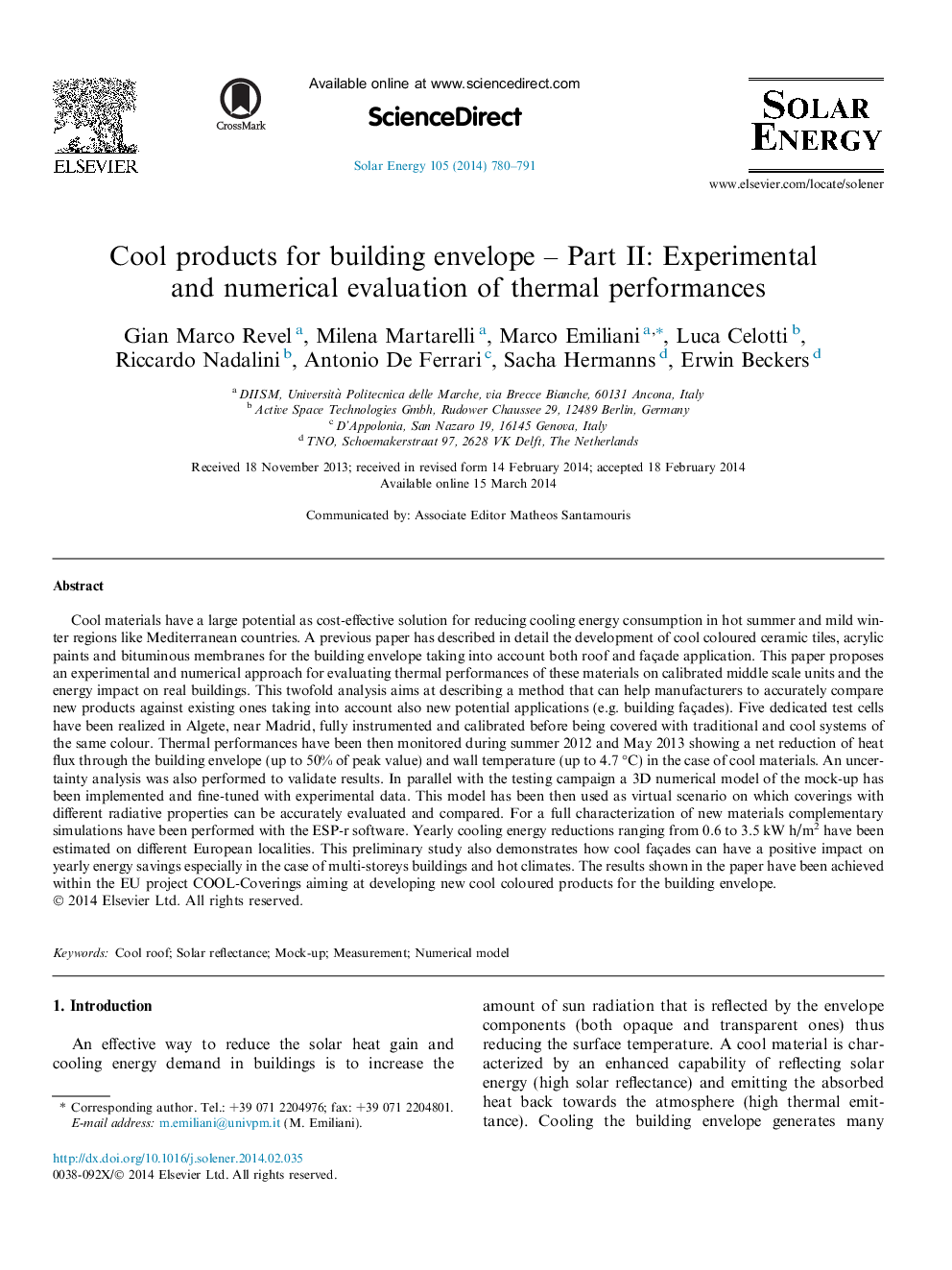| کد مقاله | کد نشریه | سال انتشار | مقاله انگلیسی | نسخه تمام متن |
|---|---|---|---|---|
| 1550094 | 1513113 | 2014 | 12 صفحه PDF | دانلود رایگان |
• Experimental and numerical evaluation of cool coloured materials.
• Middle scale mock-ups fully instrumented for thermal performances monitoring.
• Cool coatings reduce heat flux peaks up to 50% and wall temperature up to 4.7 °C.
• Numerical building model validated by experimental data for cool material assessment.
• ESP-r simulation for the analysis of energy performances on large scale buildings.
Cool materials have a large potential as cost-effective solution for reducing cooling energy consumption in hot summer and mild winter regions like Mediterranean countries. A previous paper has described in detail the development of cool coloured ceramic tiles, acrylic paints and bituminous membranes for the building envelope taking into account both roof and façade application. This paper proposes an experimental and numerical approach for evaluating thermal performances of these materials on calibrated middle scale units and the energy impact on real buildings. This twofold analysis aims at describing a method that can help manufacturers to accurately compare new products against existing ones taking into account also new potential applications (e.g. building façades). Five dedicated test cells have been realized in Algete, near Madrid, fully instrumented and calibrated before being covered with traditional and cool systems of the same colour. Thermal performances have been then monitored during summer 2012 and May 2013 showing a net reduction of heat flux through the building envelope (up to 50% of peak value) and wall temperature (up to 4.7 °C) in the case of cool materials. An uncertainty analysis was also performed to validate results. In parallel with the testing campaign a 3D numerical model of the mock-up has been implemented and fine-tuned with experimental data. This model has been then used as virtual scenario on which coverings with different radiative properties can be accurately evaluated and compared. For a full characterization of new materials complementary simulations have been performed with the ESP-r software. Yearly cooling energy reductions ranging from 0.6 to 3.5 kW h/m2 have been estimated on different European localities. This preliminary study also demonstrates how cool façades can have a positive impact on yearly energy savings especially in the case of multi-storeys buildings and hot climates. The results shown in the paper have been achieved within the EU project COOL-Coverings aiming at developing new cool coloured products for the building envelope.
Journal: Solar Energy - Volume 105, July 2014, Pages 780–791
